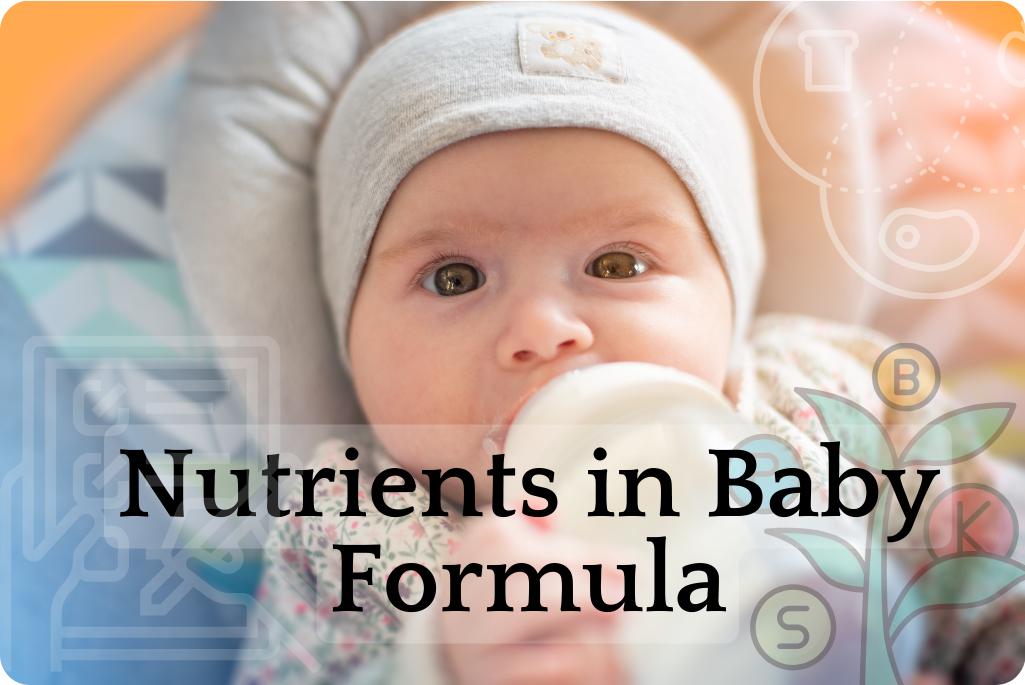Are you worried that microwaving baby formula might destroy its essential nutrients? Many parents share this concern, leading to a debate on whether this convenient heating method compromises the nutritional quality of the formula. In this article, we delve into the facts and myths surrounding microwaving baby formula. You’ll discover the scientific evidence on nutrient retention, learn about safe heating practices, and gain insights from experts to help you make informed decisions about preparing your baby’s formula without compromising its nutritional value.
Baby Formula Nutrients
Key Nutrients in Baby Formula

Baby formula is designed to provide all the essential nutrients necessary for an infant’s growth and development. These nutrients include proteins, vitamins, minerals, and fats.
- Proteins: Essential for growth and development, proteins help build and repair tissues. They are crucial for the development of muscles and organs.
- Vitamins: Vitamins such as A, D, E, K, C, and B-complex are vital for various bodily functions. Vitamin D, for instance, supports bone health, while vitamin C boosts the immune system.
- Minerals: Calcium, iron, and zinc are among the key minerals in baby formula. Calcium is crucial for bone development, iron is essential for blood production, and zinc supports the immune system and cell growth.
- Fats: Healthy fats are important for brain development and energy. Essential fatty acids like DHA and ARA are critical for neurological development.
Nutrient Sensitivity to Heat
Certain nutrients in baby formula are sensitive to heat and can degrade when exposed to high temperatures. It’s important to understand how heat affects these nutrients to ensure your baby receives optimal nutrition.

- Proteins: Excessive heat can denature proteins, changing their structure and potentially reducing their nutritional value.
- Vitamins: Water-soluble vitamins like vitamin C and B-complex vitamins are particularly sensitive to heat and can lose their potency. Fat-soluble vitamins (A, D, E, K) are also affected but to a lesser extent.
- Other Nutrients: Minerals are generally more stable under heat, but the bioavailability of some minerals can be affected. Additionally, excessive heat can lead to the breakdown of essential fatty acids, reducing their efficacy.
Understanding the sensitivity of these nutrients to heat can help you make informed decisions about how to warm baby formula while preserving its nutritional integrity.
The Microwaving Process
How Microwaves Heat Food
Microwaves heat food using electromagnetic radiation, which causes water molecules in the food to vibrate and produce heat. This process heats food quickly and efficiently from the inside out.
Microwave Heating: Microwaves generate electromagnetic waves that penetrate food, causing water molecules to vibrate and generate heat. This method heats food unevenly because microwaves are absorbed differently in various parts of the food.
Comparison with Other Methods: Traditional heating methods like stovetops and ovens use conduction and convection to transfer heat from the surface to the interior. These methods typically provide more even heating but take longer and can result in nutrient loss due to prolonged exposure to heat. Microwaving is faster but can result in hot spots and uneven heating, which may not be ideal for delicate substances like baby formula.
Common Concerns with Microwaving Formula
Parents often worry about the safety and nutritional quality of microwaved baby formula. These concerns revolve around the potential degradation of nutrients and the risk of uneven heating.
Nutrient Degradation: The rapid and uneven heating of microwaves can potentially degrade sensitive nutrients, particularly proteins and vitamins. Overheating can destroy these nutrients, reducing the formula’s nutritional value.
Uneven Heating: Microwaving can create hot spots in the formula, which can be dangerous for infants. These hot spots can scald a baby’s mouth and throat. To mitigate this risk, it’s recommended to stir the formula thoroughly after microwaving and check the temperature before feeding.
Safety Concerns: Using a microwave to heat formula in plastic bottles may cause harmful chemicals to leach into the formula. It is safer to transfer the formula to a microwave-safe container before heating it and then pouring it back into the feeding bottle.
Understanding these concerns can help parents make safer choices when preparing baby formula and ensure that their babies receive the best possible nutrition.
Scientific Studies and Findings
Research on Microwaving and Nutrient Retention
Scientific research has explored the impact of microwaving on the nutritional quality of food, including baby formula. These studies aim to determine if microwaving causes significant nutrient loss.
Key Studies: Multiple studies have investigated the effects of microwaving on nutrient retention. One study found that microwaving preserves vitamins and minerals comparably to other heating methods when used correctly. However, water-soluble vitamins like vitamin C can be more susceptible to degradation if the formula is overheated or microwaved for too long.
Conclusions: The consensus from these studies is that while microwaving can lead to some nutrient loss, it is not significantly more than other heating methods when proper precautions are taken. Stirring the formula to distribute heat evenly and using short heating times can help minimize nutrient degradation.
Comparative Analysis with Other Heating Methods
Comparing the nutrient retention of microwaving with other heating methods like stovetop and bottle warmers provides a clearer understanding of the best practices for preparing baby formula.
Stovetop Heating: Stovetop heating uses conduction to warm the formula, usually resulting in even heat distribution. However, prolonged heating times can lead to greater nutrient loss, particularly for heat-sensitive vitamins.
Bottle Warmers: Bottle warmers are designed to heat formula evenly and gently, reducing the risk of overheating and nutrient loss. They typically maintain a consistent temperature, which is beneficial for nutrient retention.
Microwaving: Microwaving is faster and can be convenient, but it requires careful handling to avoid uneven heating and hot spots. Studies have shown that with proper stirring and short heating times, microwaving can preserve nutrients comparably to stovetop and bottle warmers.
Overall, while each method has its pros and cons, understanding the principles behind each can help parents choose the best way to prepare baby formula while retaining its nutritional quality.
Best Practices for Heating Baby Formula
Safe Microwave Heating Techniques
While microwaving baby formula can be convenient, following specific techniques can help ensure safety and nutrient retention.

- Use Microwave-Safe Containers: Always transfer the formula to a microwave-safe container before heating. Avoid heating plastic bottles directly in the microwave to prevent chemical leaching.
- Short Heating Times: Heat the formula in short bursts (10-15 seconds) to prevent overheating. This helps preserve sensitive nutrients.
- Stir Thoroughly: After microwaving, stir the formula thoroughly to distribute the heat evenly and eliminate hot spots.
- Check Temperature: Always test the formula’s temperature by shaking a few drops on the inside of your wrist. It should be lukewarm, not hot.
- Avoid Overheating: Be mindful not to overheat the formula, as excessive heat can degrade essential nutrients like vitamins and proteins.
Alternative Heating Methods
There are several alternative methods to heat baby formula that can be as effective as microwaving while potentially offering better nutrient retention.
Bottle Warmers
- Pros: Designed specifically for warming bottles evenly and gently, reducing the risk of nutrient loss and hot spots.
- Cons: Can be slower than microwaving and requires an additional appliance.
Hot Water Baths
- Pros: Provide a gentle and even heating method. Simply place the bottle in a bowl of hot water and allow it to warm gradually.
- Cons: It takes longer than microwaving and requires monitoring to ensure the water stays at a safe temperature.
Stovetop Heating
- Pros: Allows for controlled and even heating. Place the formula in a pan and heat gently while stirring.
- Cons: Can be time-consuming and requires constant attention to prevent overheating.
By following these best practices, parents can ensure that their baby formula is heated safely and retains its nutritional value, providing the best possible nutrition for their infants.
Expert Opinions and Recommendations
Pediatrician Insights
Health professionals generally advise caution when microwaving formula. They recommend using short heating times and stirring thoroughly to avoid hot spots and ensure even heating. Paediatricians often suggest alternative methods like bottle warmers or hot water baths to reduce the risk of overheating and nutrient loss.
Nutritionist Advice
Nutritionists emphasize the importance of maintaining the formula’s nutritional quality. They recommend using methods that minimize exposure to high temperatures and suggest practical tips like using glass or microwave-safe containers, checking temperatures carefully, and avoiding prolonged heating. Nutritionists also advocate for alternative heating methods that offer more controlled and even warming.
In summary, we’ve explored the nutrients in baby formula, the effects of microwaving, scientific findings, and best heating practices. While evidence shows that microwaving can potentially cause nutrient loss, following safe techniques can mitigate this. Parents should make informed choices about heating methods to preserve formula quality. Share your experiences and tips in the comments, and follow our blog for more parenting and nutrition advice.

Hey There, I’m Monica, Mom of two. This is my personal blog site. Here I write about Kitchen Tips Tricks, Recipes, and Review the products I use.
I hope you enjoy the article. Give me feedback on how I’m doing with my blog. I would appreciate it so much.
Have a great day! 🙂
[Follow me on Twitter]


